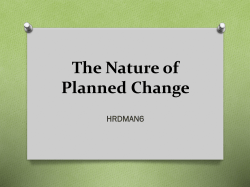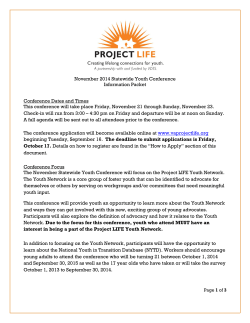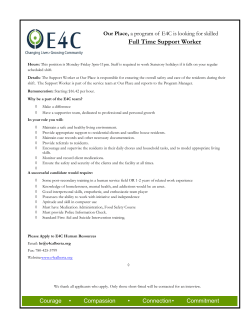
ÑоÑиалÑной ÑабоÑÑ, ÑÑо ÑÑебÑÐµÑ ÑÑилиÑÑ Ð°Ð½Ð°Ð»Ð¸ÑиÑеÑкÑÑ
социальной работы, что требует усилить аналитическую, контрольно-оценочную деятельность руководителя и специалистов социальной службы, а также усиление внимания к формированию квалиметрической компетентности будущих профессионалов социальной сферы. Библиографический список: 1. Гарашкина Н.В. Технология социальной работы. Учеб. -метод. пособие. Тамбов: Изд-во ТГУ им. Г.Р.Державина, 2004. 2. Гарашкина Н.В. Интерактивные методы обучения в технологии в вузовские подготовки будущих социальных работников Вестник, 12. 2013. С.113121. 3.Оценка результативности, эффективности и качества деятельности учреждений социальной поддержки населения. / Под ред. П. Романова, Е. Ярской -Смирновой.- Саратов, 2007. 4. Гарашкина Н.В. Дидактическое проектирование подготовки специалистов социальной работы в вузе дис. … д-ра пед. наук. Тамбов. 2004. 5. Топчий Л.В. Социальная квалиметрия, оценка качества и стандартизация социальных услуг. М., 2009. 6. Национальный стандарт РФ «Социальное обслуживание населения. Термины и определения», 2005. 7. Национальный стандарт РФ «Социальное обслуживание населения. Контроль качества социальных услуг детям», 2008. Norma De Piccoli, Silvia Gattino, Cristina Onesta Mosso, Department of Psychology, University of Turin SOCIAL WORKERS AND SOCIAL WORK IN THE GLOBAL AGE ABSTRACT The current debate on globalization is very heated. Some authors recognize the benefits that can be derived from it, such as the possibility of sharing rules and purposes, the cultural enrichment that comes from overcoming the boundaries and a decrease of racism and ethnocentrism. Other authors, instead, highlight the negative aspects of globalization, such as an increase of conflicts between different cultures, etc… Certainly, those who deal with issues related to living in society cannot ignore this debate. Globalization, in fact, involves not only technological, economic and political issues, apparently distant from everyday life, but also psychological and anthropological issues [1]. Moreover, our lives are increasingly influenced by facts and events that occur beyond the social contexts in which we daily operate. Nevertheless, overlooking the place where, daily, individuals build and re-build their lives, it would be a mistake. We believe, in fact, that it is necessary to reconsider the local dimension, since the local community can become the place of interpersonal relationships that meet the human needs of belonging, security and identity. 101 It is known that the need for belonging, security and identity can translate into defensive behaviours that can lead to increase the comparison between in-group and outgroup. Therefore, the questions we ask are: if communities are characterized by a sense of belonging, by shared norms and values, a strong sense of in-group, how is it possible implement forms of co-management of the public life that try to integrate the differences instead of assimilate them? What is the idea of community that allows hypothesizing forms of cohabitation respectful of the differences? What can be the role and contribution of social workers to develop local communities grounded on both mutual trust and social inclusion? We believe that a social worker who intends to address these questions should have the role of resources connector. In other words, because this kind of work is rooted within the context of the physical and social environment of the community, its distinctive feature is the active involvement of groups and individuals targeted by the intervention. Therefore, external facilitators work systematically with community people, rather than working for them. The social worker as a resources connector: for an emic approach to social work For a social worker, to be a resources connector means to use his/her own theoretical and conceptual knowledge to interpret the contexts in which operates. It means also to use practices of intervention that derive from his/her disciplinary approaches (psychology, sociology, education, anthropology, etc.), within an ethical and epistemological approach that moves from the following theoretical assumptions: -Considering the subject as a social individual in the context: the human being is a social being, therefore the perceptions, emotions, thoughts and actions that develops in the social relations must be described and understood in the context in which they are expressed and manifested. They are the result of the social context and this, in turn, is modified and influenced by the actions of the subjects; -Considering individuals, groups and collectives as social subjects, active and participants. From the point of view of a social worker, it means to identify forms of intervention that provide a joint action between and with the beneficiaries of the intervention. By doing so, these individuals are not only the ―targets‖ of the intervention, but also co-promoters of the intervention. -Combining phases of interventions and research, in order to characterize: a) the characteristics of the territory in which the intervention is carried out, identifying objective aspects (i.e. structural and socio-demographic data, etc.) and subjective aspects (representations, perceptions and evaluations of the subjects, individual and social needs, etc.); b) the effectiveness of the intervention through a constant monitoring and evaluation with respect to both the content and the processes. The above principles are the basis of a methodology that is both research and intervention aimed at change, i.e. the action-research. Kurt Lewin and the action-research In the 40s Kurt Lewin (1890-1947), one of the fathers of social psychology, introduced action-research method [6]. Central in Lewin‘s thought is the rejection of 102 any kind of mechanicism in the study of psychological phenomena. Lewin‘s perspective is in fact a dynamic perspective, which examines the situations, considering not the individual elements but their interdependence and their relationships. Through his field theory, he proposed a theoretical model in order to study the interdependence of the facts coexisting in a given moment, psychologically relevant to the subject. In the field, there are elements that particularly concern the individual, that is, his personal world, and other environmental features. According to Lewin, facts are on one hand perceptions, representations, knowledge, evaluations, aspirations of the individual, but on the other hand also those elements of the external environment that affect or interfere with the psychological facts, and even those facts which, although present, not directly enter into the subject‘s field, i.e., in his living space, at that given moment. Lewin has developed a method that aims to study natural social contexts and at the same time to produce and support a controlled change, using the tools of scientific inquiry at the service of the natural environment: the action-research. A feature that characterizes the action research process is that it is carried out necessarily in the group. The group is the psychosocial place par excellence, where the individuals build their actions, and represents a tool that can facilitate the change. The action research is a cyclic process and envisages three phases: 1) the group establishment, that will be the basis for the future phases; 2) the research that aims at collecting data and information in order to determine the priorities of intervention in that territory; 3) the intervention, i.e. the fulfilment of actions that aim at change. These phases are closely related into a continuous process, where the assessment and the reflection about the evolution of intervention are important steps. During these phases, in fact, the people involved in the process can also ―go back‖ to gather more information and re-consider the action strategies hypothesized. In the action-research process, the phase of evaluation process is fundamental. Lewin himself noted the importance of identifying the objective parameters to evaluate the results of the intervention promoted. Without the evaluation of results, the social workers themselves cannot assess the effectiveness of their intervention. This deprives them of relevant information about the quality of their professional action and prevents them to learn from experience, because no information is available to discriminate between the aspects that have worked from those that, on the contrary, have been critical. According to Lewin, also the change process consists of three steps: unfreezing, changing, freezing. The first stage involves the unfreezing of the status quo and, as many people will naturally resist any change, the goal during the unfreezing stage is to create an awareness of how the status quo is not convenient. The changing step is marked by the implementation of the change. It is the time during which most people struggles with the new reality. It is a time marked by uncertainty and fear, making it the hardest step to overcome. During the changing step, people begin to learn the new behaviours, processes and ways of thinking. Finally, the freezing stage is marked by the stabilization of the new state after the 103 change. This step is especially important to ensure that people do not revert back to their old ways of thinking or doing prior to the implementation of the change. Efforts must be made to guarantee that the change does not represent a wasted time. An expert, having an external point of view, may help in addressing these steps, because he may help those involved in them to be aware of the limitations of the current situation and may promote the foreshadowing of alternative strategies. However, without the cooperation of the people directly involved in this process, the change would not be possible. The action-research after Lewin The early death prevented Lewin to produce a systematic theory, thus leaving the field open for others scholars with similar approaches to research like-minded, elaborate and interpret its definition. After Lewin, the scholars who studied the action research have been inspired by the lewinian thought but at the same time, have given rise to different interpretations, emphasizing different aspects of the process. The absence of clear and defined guidelines meant that, after Lewin, actionresearch came out from the scope of social psychology in which he found his birth, to seek new spaces in the more general domain of the social sciences. Among his areas of application are the public health, social welfare, criminology, while in psychological domain attempts to use the action research have been made in the field of community psychology and in the researches on evaluation. The different fields of application and the variety of methodological approaches that the action-research is referred share some characteristics. The actionresearch is a form of research that generates knowledge for the express purpose of bringing an action to promote change and social analysis. To achieve these aims it considers relevant participation and looks like a cyclical process of investigation that includes the diagnosis of a problematic situation, the planning stages of the action, implementation and evaluation of results. This phase includes a new diagnosis of the situation that has arisen from previous activities [3]. The action-research has the following main features: - It is always applied to a context and addressed problems of real life; - It is a survey in which participants and researchers generate knowledge through cooperation; - Considers the diversity of experience and expertise within the group as an opportunity for enrichment for the process of action research; - The meanings that emerged within the process of investigation leading to social action as well as the reflection on the action can lead to the construction of new meanings of the action same; - Credibility-validity of knowledge gained through action-research is given by ―the ability of actions to effectively solve problems and increase the power of the community members to exercise control of the situation‖ [4; 76]. In summary, the action research is a process by which researchers and 104 members of local organizations, communities, social groups collaborate to research, understanding and problem solving [5]. Some reflections and critical elements. The social worker as mediator As it is well-known, the comparison and exchange are not in any circumstances a ―natural consequence‖ of the construction of shared and sharable worlds. It is not easy to educate groups and communities to a culture of difference, since it is known as the presence of the other is perceived as a threat to their own identity and specificity. Extensive literature on studies related to the psychological processes in groups notes that on the one hand cohesion maintains people together and helps to strengthen relations between people. On the other hand, however, the identification with the in-group (characterized by the perception of belonging to a group with highly positive features, which also become its own features) foreshadows a differentiation from out-group. Promoting the ―culture of difference‖ implies crossing different challenges, both cultural and political. It is based on the effort to maintain the specificity and identities of either individuals or groups who, for their history and their traditions, express different attitudes and opinions. They are carriers of different needs and requirements, but at the same time, could promote new ways of interacting, new resources. Promoting the ―culture of difference‖ also means to give space and opportunity to change and innovation, welcoming the diversity and integrating it. However, how those who work in social and territorial context know, however, this is especially difficult as they work in disadvantaged areas. Indeed, if they deal with individuals whose identity, either at individual or social level, is perceived as weak and vulnerable, they would have to cope with resistance to change and to integrate diversity. The other is also a chance to be who you are not, and therefore he may question the perception of your own identity as unique and consistent over time. The fundamental human fear, which is also the origin of racism, has to accept not so much to be different, but to be equal to all other human beings [2] is therefore losing its uniqueness and specificity. The process of innovation promoter should be aimed at changing the relationship crystallized in the conflict in creative relationships that is willing to innovate. How do you achieve this? It comes to ensure that the individuals rediscover confidence in social ties. Indeed, only the construction of reliable and righteous ties can lead people to desire cooperative solutions in the management of diversity and conflicting interests and pursue them with tenacity. The social worker or, rather, the field worker (psychologist, educator …) would therefore have the role of mediator. The community mediator would play a role in the conflict reduction. Indeed, he would be perceived as an actor, who, on the one hand, is not collusive with conflict dynamics and, on the other hand, connects community resources being the guarantor of a participatory process, aimed at creating a sense of belonging. He performs a function of connecting parts that have not been able to build a common project or 105 even, that have not found a place to manage the conflict. According Rumiati and Pietroni [7], the conflict management would require the following strategies: - Transform the conflict from the plane of the emotions to that of cognition, thus bringing the subject to reflect on perceptions on the quality of relationships, the actual management of power; - Intervene on perceptions of interdependence between groups, on the opportunities that the relationships in question may provide, on the possible negotiation strategies; to use a common phrase ―shift the focus from the half empty glass half full glass‖. Moreover, it has to be considered that not all conflicts are negotiable or solvable. Regarding social relations, what are the implications? It comes to live with conflict and, where it is possible, to glimpse possible evolution in time of conflict situation. What about participation? Often it takes the role of a King Midas who can ensure the success of no matter what project, without considering that participation, as already mentioned, can trigger forms of conflict. Therefore, in these cases it may be necessary to ―suspend‖ the intervention and postpone it to give priority to another goal: educating for participation. This means a) to make an analysis of the context in order to predict, where possible, what are the dynamics established over time, that participation has to face, or risks crumbling; b) to identify the micro-actions aimed to preparing, in a psychosocial meaning people to a democratic and participatory approach to the problems, because, as Lewin taught us, ―Democracy must be learned‖. References 1. Amerio P., 2004, Problemi umani in comunità di massa [Human Problems in Community of Masse], Einaudi, Torino. 2. Ciola A., Rosenbaum F., 2003, Guadi e ponti tra culture. Cantata a due voci e forme diverse di mediazione culturale [Fords and bridges between cultures. Cantata in two voices and different forms of cultural mediation], in M. Andolfi (Ed.), La mediazione culturale [The cultural mediation], Franco Angeli, Milano. 3. Elden M., Chisholm R.F., 1993, Emerging varieties of action research: introduction of the special issues, Human Relations, 46, 2. 4. Lewin K., 1948, Resolving Social Conflict, New York, Harper. 5. Lewin K., 1951, Field Theory in Social Science, New York, Harper & Row. 6. Rumiati R. Pietroni D., 2001, La negoziazione [The Negotiation], Raffaello Cortina, Milano. Сидоркина Е. А., Панкратова Л. Э. РГППУ, г. Екатеринбург 106
© Copyright 2025









